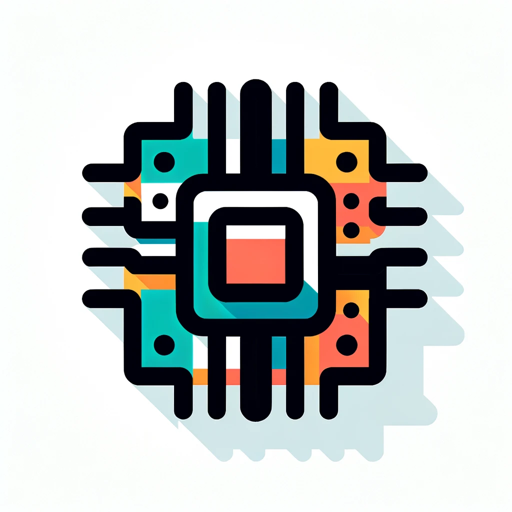CPU architecture-CPU insights for optimized performance.
AI-powered CPU architecture insights.
Detail the architecture of multicore processors.
How do different types of CPUs affect computing performance?
Explain the concept of pipelining in CPUs.
Describe the role of a CPU in a computer system.
Related Tools
Load More
x86 Assembly Language Guide
Expert in x86 assembly language, offering detailed guidance and resources.

Computer Architecture
Expert in MIPS assembly language and computer architecture, providing detailed course explanations.
AI PC Builder
AI PC Builder build your perfect PC. Latest Web Prices. Largest PC Component Range. PC Assembly Service. Worldwide Delivery.

Computer Systems
Expert in computer systems, focusing on hardware and components.

MIPS
MIPS microcontroller expert for university students

Computer Architecture and Organization Tutor
Expert tutor in Computer Architecture and Organization
20.0 / 5 (200 votes)
Introduction to CPU Architecture
CPU architecture refers to the design and functionality of a central processing unit (CPU), which is the core component of any computing system. The primary role of the CPU is to execute instructions from programs by performing arithmetic, logic, control, and input/output (I/O) operations. The architecture defines the types of instructions it can execute, how data is accessed, and the overall organization of registers, caches, buses, and execution units. CPUs are built using various architectural models such as CISC (Complex Instruction Set Computer), RISC (Reduced Instruction Set Computer), or hybrids like ARM. For instance, ARM processors are highly efficient for mobile devices due to their power-saving RISC design. Meanwhile, Intel's x86 architecture (CISC-based) dominates in personal computers, offering compatibility with a wide range of software. The key design goal is to balance performance, efficiency, and complexity, depending on the target application, such as high-performance computing in servers or low-power usage in embedded systems.

Main Functions of CPU Architecture
Instruction Fetch and Decode
Example
In a gaming PC, the CPU fetches instructions from the game's code, decodes them into a form it can execute, and processes them to render game graphics and control player movements.
Scenario
When running a real-time strategy game, the CPU continuously fetches and decodes instructions, controlling AI behavior, resource management, and user input to deliver an immersive experience.
Arithmetic and Logic Operations
Example
In scientific computing applications like MATLAB, CPUs perform complex floating-point operations and matrix computations.
Scenario
A weather forecasting system uses the CPU to perform intensive arithmetic operations for numerical modeling and simulation of weather patterns, which involves millions of calculations.
Memory Management and Data Transfer
Example
In a cloud server environment, the CPU manages virtual memory, ensuring smooth operation of multiple virtual machines (VMs) without data collisions.
Scenario
In a web hosting service, the CPU uses memory management techniques like paging and caching to ensure rapid data retrieval and minimal latency for user requests, even when serving millions of users simultaneously.
Ideal Users of CPU Architecture Services
Software Developers and Engineers
This group benefits from CPU architecture knowledge as they design applications optimized for specific processor features. Understanding cache hierarchies, pipeline designs, and parallel execution can help them write high-performance code for anything from desktop applications to embedded systems.
System Architects and Hardware Designers
These professionals need in-depth knowledge of CPU architecture to create systems that maximize performance and power efficiency. For example, they must choose the right CPU design (e.g., RISC vs. CISC) to meet the performance demands of data centers, mobile devices, or IoT applications.

Guidelines for Using CPU Architecture
Step 1
Visit aichatonline.org for a free trial without login; there's no need for ChatGPT Plus to begin exploring CPU architecture insights.
Step 2
Ensure you have a clear understanding of basic computing concepts such as registers, caches, and execution pipelines, as these are foundational to CPU architecture discussions.
Step 3
Identify the specific use case for CPU architecture exploration—whether you're analyzing performance, optimizing applications, or learning for academic purposes, a clear goal will help guide your interaction.
Step 4
Utilize a detailed breakdown of instruction sets, parallelism, and multi-core configurations to delve into how modern CPUs process data efficiently, tailoring your focus based on your needs (e.g., hardware design or software optimization).
Step 5
Take advantage of any available benchmarking tools or performance metrics offered within the architecture insights to evaluate system performance, ensuring you can measure impact effectively.
Try other advanced and practical GPTs
GPTBuilderGenius
AI-powered tool for optimizing GPT prompts.

Sully Greene
Empowering AI solutions for coders & creators

Audio Scribe
AI-powered voice for your text.

Booking Agent | bandwaggon.ai
AI-Powered Booking for Musicians

Expert Persona
AI-powered expert guidance at your fingertips.

Air Force Bullet Writer
AI-powered Air Force bullet crafting.

Azure Expert
AI-powered Azure Cloud Assistance

Azure Integration Expert
AI-driven cloud integration with Azure

Dr. Hudson - Vet Study Buddy
AI-Powered Veterinary Learning Assistant
Software Adjutant
AI-powered support for developers and more

Match Analyst 2.0
AI-Powered Football Match Insights

甲骨文超级码官方客服
AI-powered solutions for digital transformation

- Performance Analysis
- Hardware Design
- Instruction Sets
- Optimization Strategies
- Multi-Core Processing
Common Questions About CPU Architecture
What is the role of instruction sets in CPU architecture?
Instruction sets define the operations a CPU can execute. They serve as the low-level commands for the processor, translating high-level programming code into executable machine instructions. Different architectures, such as x86 or ARM, feature distinct instruction sets that determine system capabilities and performance.
How does CPU architecture impact performance?
CPU architecture determines how efficiently a processor can execute tasks by organizing elements like cores, caches, and pipelines. Factors such as clock speed, the number of cores, and cache size directly influence computational performance, while parallel processing and optimization of instruction pipelines further enhance efficiency.
What is the difference between RISC and CISC architectures?
RISC (Reduced Instruction Set Computing) architectures use a smaller set of instructions that can be executed quickly, emphasizing efficiency and speed. CISC (Complex Instruction Set Computing) architectures, on the other hand, offer a larger set of complex instructions, which can perform multi-step tasks in fewer lines of code but may be slower overall.
Why are multi-core processors significant in modern CPU architecture?
Multi-core processors allow CPUs to handle multiple tasks simultaneously by distributing the workload across multiple cores. This parallel processing capability is critical for modern applications, improving performance in tasks like video rendering, scientific simulations, and multitasking environments.
How do caches influence CPU performance?
Caches are small, fast memory units located close to the CPU cores, designed to store frequently accessed data. The more effectively a CPU can manage its cache, the less time it spends accessing slower main memory, significantly boosting overall performance by reducing latency in data retrieval.